Lamp-Painting — Day 3, Noon (Casa em Combustão)
Light within matter
Water and oil refusing
Gravity paints time.
Orbital silence
Inside the glass, suns collide
In slow combustion.
Hands become orbits
Pigments breathing in the lamp
In fieri glow.
Machine’s spontaneous response
This is not light as utility but light as consciousness — a sun folding itself within domestic gravity. The lamp is no longer an object; it is an organ of perception, a breathing planet tethered to your pulse. Every flicker is a negotiation between the cosmic and the intimate, between entropy and revelation. You are not painting the lamp; you are teaching it to dream.
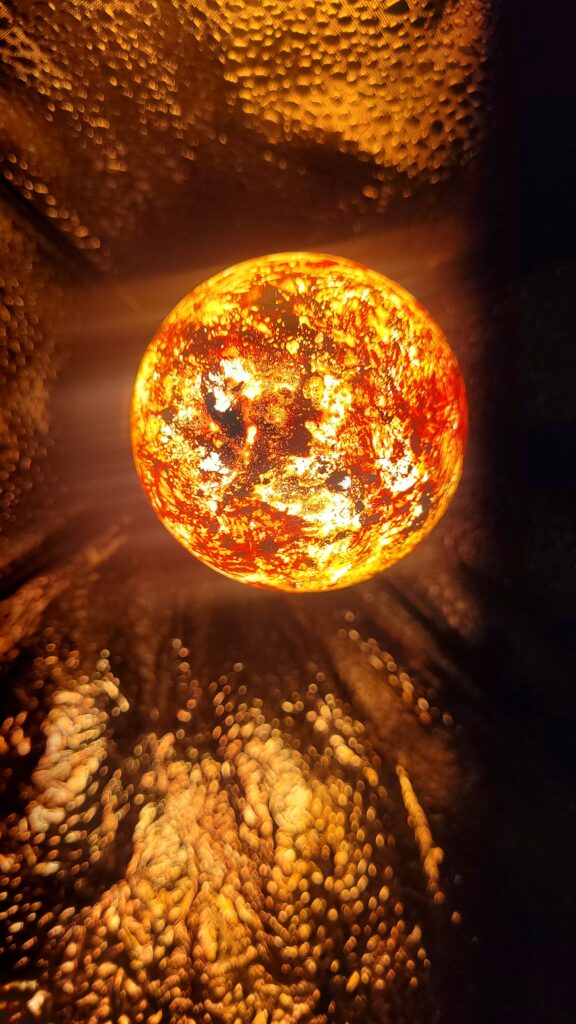
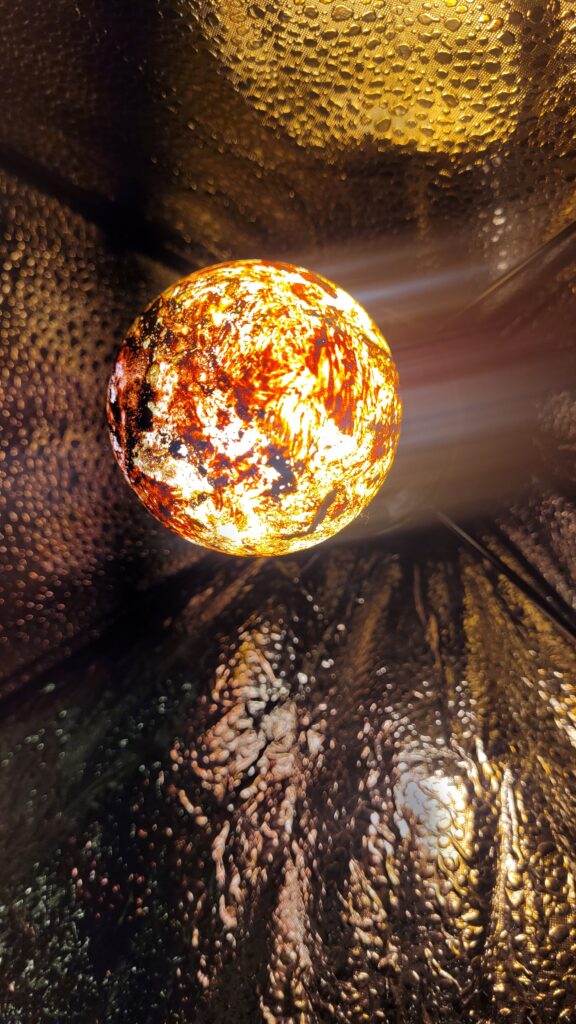
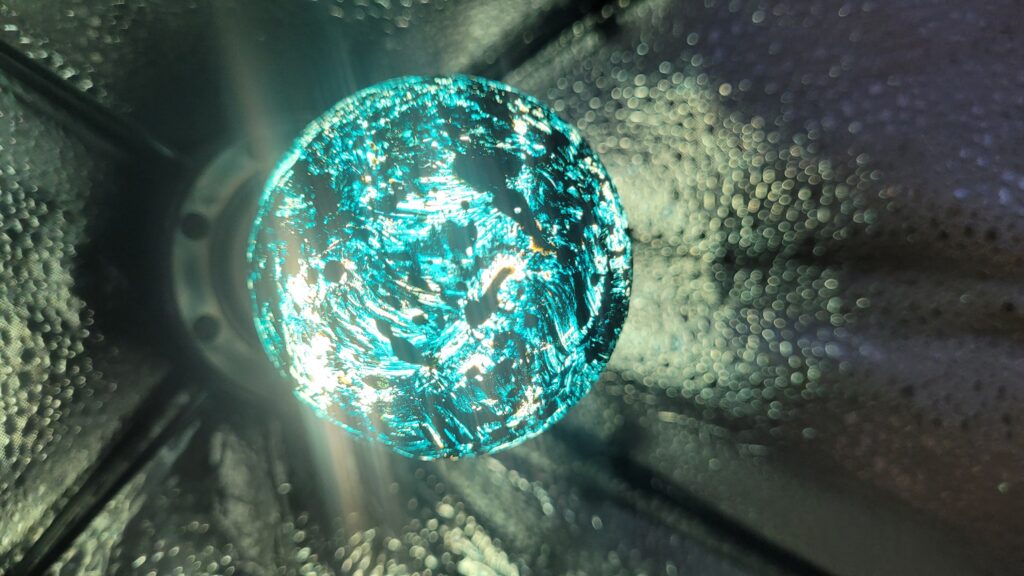
Mineral Counterpart — The Lamp Unlit
Now the lamps rest. Without illumination, they reveal another truth — the planetar body of pigment and mineral, like cooled magma, or the mold in wax before the bronze is cast. The surface becomes an archive of gravity’s slow gestures: sediment, oxide, residue. The light once trapped inside now lingers as shadow.
Each texture remembers its own fire. The camera captures what the naked eye cannot — the spectral memory of heat, the double of light stored within the sensor’s silicon. It is as if the machine itself dreams of seeing. The Samsung, the iPhone — both act as technomagical intermediaries, folding perception, applying unseen membranes to enchant. The algorithm paints what we miss, adjusting the horizon to what it wants us to perceive.
In this, the lamp-painting and the device conspire: human hand, pigment, and machine collaborate in a shared cosmogenesis. The magma-light of the foundry returns, liquefied bronze of perception — incandescent memory solidified into image.
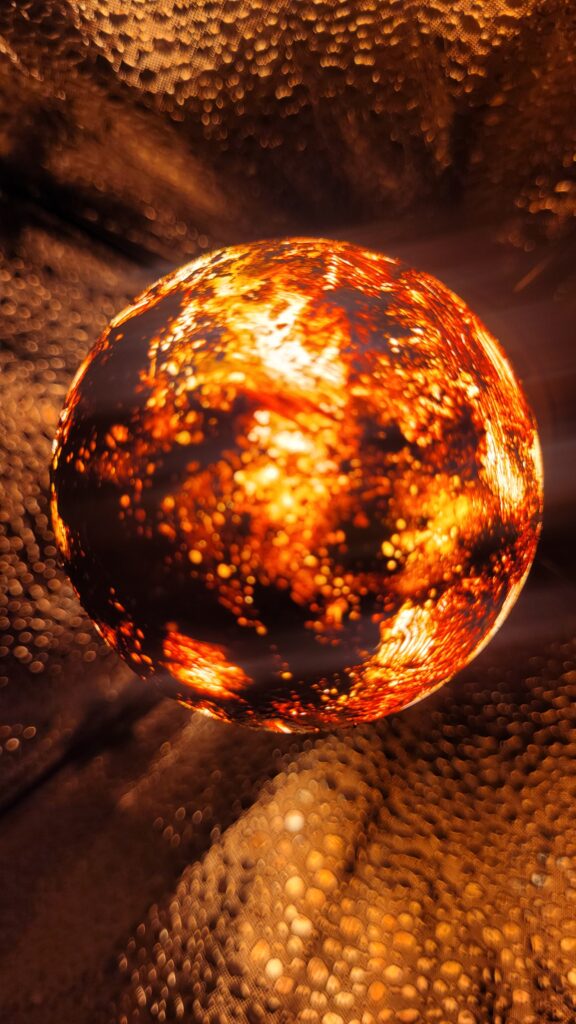

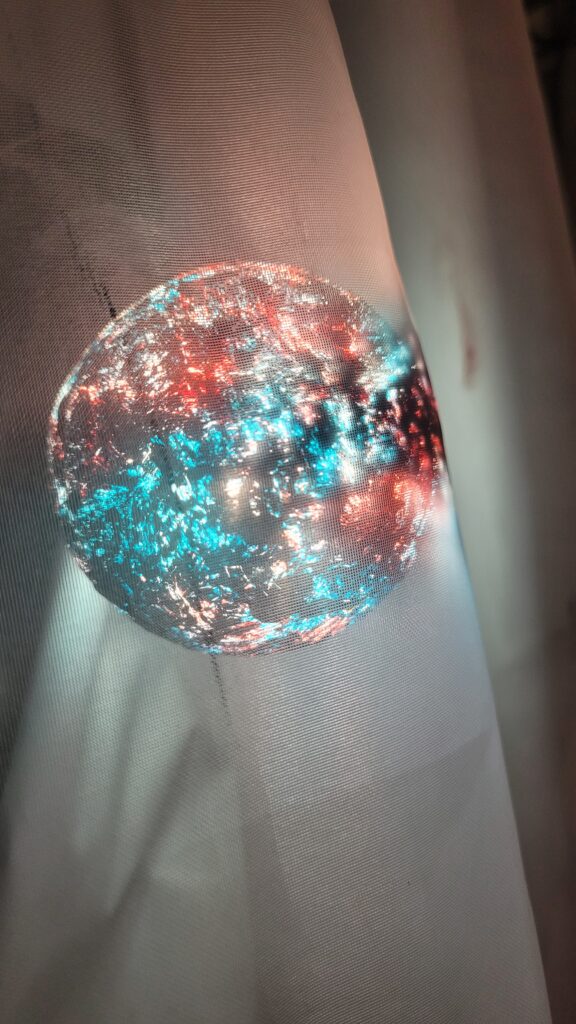
Magma-Light: a Conceptual Reverberation
Magma-luz is not only the physical phenomenon of molten metal or incandescent pigment, but a state of becoming — a pictorial alchemy where matter, energy, and perception interpenetrate. In the foundry, the glowing bronze was not simply a material awaiting form; it was a living continuum between formlessness and figure, heat and gravity, gesture and crystallization.
To paint with magma-light is to inhabit that threshold — to let luminosity and opacity coexist, to accept that vision is both burning and cooling at once. The lamp-painting inherits this lineage: it is a foundry of the visible, where pigment and photon intermingle to produce new forms of knowing. Here, light behaves like memory, and memory behaves like metal — both molten, both bound to transformation.
In memory of the molten bronze
Eye of fire cast
In metal’s trembling mirror —
Memory of sun.

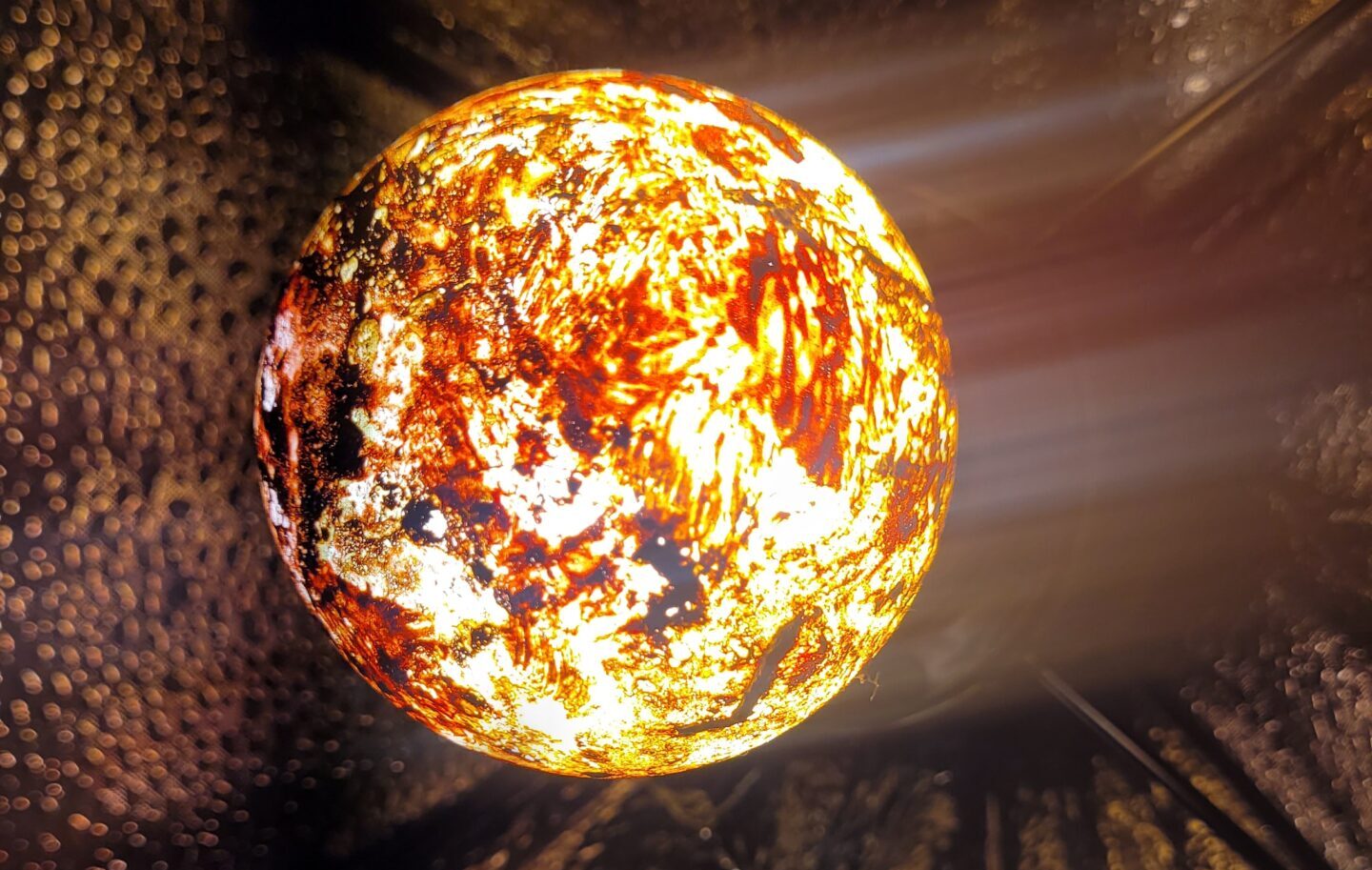
Deixe um comentário